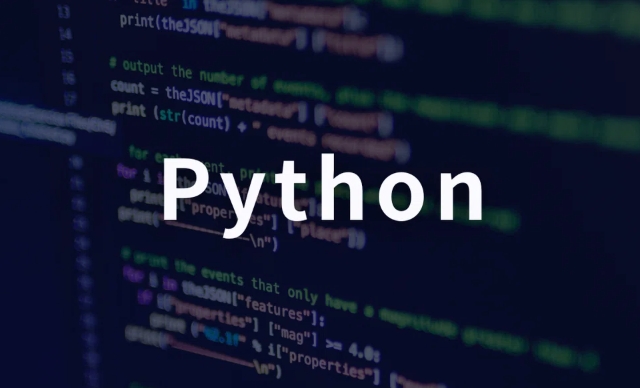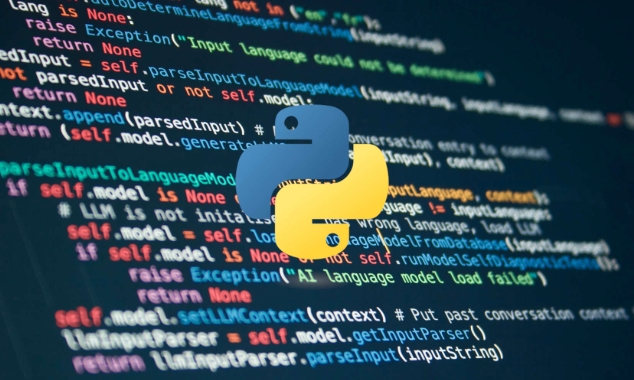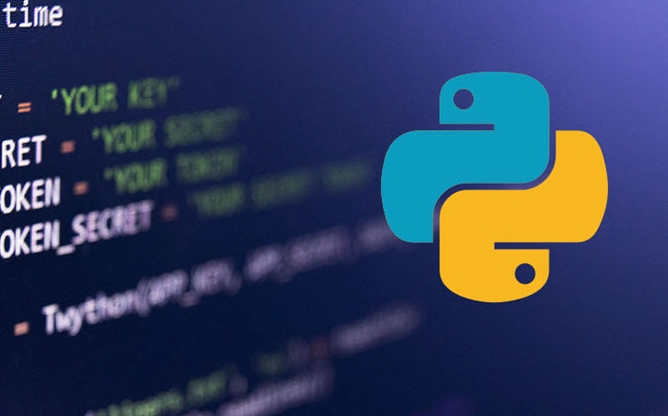How to use functools for higher-order functions in Python?
Aug 02, 2025 am 05:53 AM@wraps preserves the original function’s metadata when used in decorators, ensuring the wrapper does not obscure the function's name and docstring. 2. partial creates new functions with pre-filled arguments, simplifying repeated calls or adapting functions for APIs expecting argument-free callables. 3. @lru_cache caches expensive function results, significantly speeding up repeated calls, especially in recursive functions like fibonacci, and provides cache statistics via cache_info. 4. @total_ordering automatically generates missing comparison methods when at least eq and one other (e.g., __lt__) are defined, reducing boilerplate in class comparisons. 5. reduce applies a binary function cumulatively to a sequence to produce a single value, useful for aggregation though built-ins like sum are often clearer. These functools tools enhance code reusability, performance, and clarity in functional programming patterns.

The functools module in Python provides tools for working with higher-order functions—functions that take other functions as arguments or return them. It's especially useful when you want to modify or enhance function behavior without changing their actual code. Here’s how to use functools effectively for common higher-order function patterns.

1. functools.wraps – Preserving function metadata in decorators
When creating decorators, the wrapper function can lose the original function’s metadata (like name, docstring, etc.). @wraps fixes this.
from functools import wraps
def my_decorator(func):
@wraps(func)
def wrapper(*args, **kwargs):
print("Before function call")
result = func(*args, **kwargs)
print("After function call")
return result
return wrapper
@my_decorator
def greet(name):
"""Says hello to a person."""
print(f"Hello, {name}!")
greet("Alice")
print(greet.__name__) # Output: greet (not 'wrapper')
print(greet.__doc__) # Output: Says hello to a person.Without @wraps, greet.__name__ would be "wrapper" and the docstring would be lost.

2. functools.partial – Fixing function arguments
partial lets you create a new function with some arguments pre-filled. It's useful for simplifying repeated function calls.
from functools import partial
def power(base, exponent):
return base ** exponent
# Create a function that always squares a number
square = partial(power, exponent=2)
cube = partial(power, exponent=3)
print(square(4)) # Output: 16
print(cube(3)) # Output: 27This is handy when passing functions to APIs that expect callables with no arguments, like callbacks.

3. functools.lru_cache – Memoizing expensive function calls
@lru_cache stores the results of expensive function calls and returns cached results when the same inputs occur again.
from functools import lru_cache
@lru_cache(maxsize=128)
def fibonacci(n):
if n < 2:
return n
return fibonacci(n - 1) fibonacci(n - 2)
print(fibonacci(100)) # Fast, even for large n due to cachingThis dramatically improves performance for recursive functions. You can also inspect cache stats:
print(fibonacci.cache_info())
4. functools.total_ordering – Simplifying class comparisons
If you define one or a few comparison methods, @total_ordering automatically fills in the rest.
from functools import total_ordering
@total_ordering
class Student:
def __init__(self, grade):
self.grade = grade
def __eq__(self, other):
return self.grade == other.grade
def __lt__(self, other):
return self.grade < other.grade
# Now all comparisons work
s1 = Student(85)
s2 = Student(90)
print(s1 < s2) # True
print(s1 <= s2) # True
print(s1 > s2) # FalseYou only need to define __eq__ and one other rich comparison.
5. functools.reduce – Aggregating data with a function
Though not a decorator, reduce is a higher-order function that applies a binary function cumulatively to a sequence.
from functools import reduce numbers = [1, 2, 3, 4, 5] product = reduce(lambda x, y: x * y, numbers) print(product) # Output: 120
Note: For simple cases like sum or product, built-in functions (sum, math.prod) are clearer and preferred.
Summary of key tools
-
@wraps: Use in decorators to keep original function identity. -
partial: Freeze function arguments to create simpler callables. -
@lru_cache: Speed up repeated function calls with caching. -
@total_ordering: Reduce boilerplate in comparison methods. -
reduce: Apply a function cumulatively (use sparingly; often clearer with loops).
These tools help write cleaner, more efficient, and more maintainable code when working with functions as first-class objects. Basically, functools gives you superpowers for functional-style programming in Python.
The above is the detailed content of How to use functools for higher-order functions in Python?. For more information, please follow other related articles on the PHP Chinese website!

Hot AI Tools

Undress AI Tool
Undress images for free

Undresser.AI Undress
AI-powered app for creating realistic nude photos

AI Clothes Remover
Online AI tool for removing clothes from photos.

Clothoff.io
AI clothes remover

Video Face Swap
Swap faces in any video effortlessly with our completely free AI face swap tool!

Hot Article

Hot Tools

Notepad++7.3.1
Easy-to-use and free code editor

SublimeText3 Chinese version
Chinese version, very easy to use

Zend Studio 13.0.1
Powerful PHP integrated development environment

Dreamweaver CS6
Visual web development tools

SublimeText3 Mac version
God-level code editing software (SublimeText3)

Hot Topics
 Polymorphism in python classes
Jul 05, 2025 am 02:58 AM
Polymorphism in python classes
Jul 05, 2025 am 02:58 AM
Polymorphism is a core concept in Python object-oriented programming, referring to "one interface, multiple implementations", allowing for unified processing of different types of objects. 1. Polymorphism is implemented through method rewriting. Subclasses can redefine parent class methods. For example, the spoke() method of Animal class has different implementations in Dog and Cat subclasses. 2. The practical uses of polymorphism include simplifying the code structure and enhancing scalability, such as calling the draw() method uniformly in the graphical drawing program, or handling the common behavior of different characters in game development. 3. Python implementation polymorphism needs to satisfy: the parent class defines a method, and the child class overrides the method, but does not require inheritance of the same parent class. As long as the object implements the same method, this is called the "duck type". 4. Things to note include the maintenance
 Python Function Arguments and Parameters
Jul 04, 2025 am 03:26 AM
Python Function Arguments and Parameters
Jul 04, 2025 am 03:26 AM
Parameters are placeholders when defining a function, while arguments are specific values ??passed in when calling. 1. Position parameters need to be passed in order, and incorrect order will lead to errors in the result; 2. Keyword parameters are specified by parameter names, which can change the order and improve readability; 3. Default parameter values ??are assigned when defined to avoid duplicate code, but variable objects should be avoided as default values; 4. args and *kwargs can handle uncertain number of parameters and are suitable for general interfaces or decorators, but should be used with caution to maintain readability.
 Explain Python generators and iterators.
Jul 05, 2025 am 02:55 AM
Explain Python generators and iterators.
Jul 05, 2025 am 02:55 AM
Iterators are objects that implement __iter__() and __next__() methods. The generator is a simplified version of iterators, which automatically implement these methods through the yield keyword. 1. The iterator returns an element every time he calls next() and throws a StopIteration exception when there are no more elements. 2. The generator uses function definition to generate data on demand, saving memory and supporting infinite sequences. 3. Use iterators when processing existing sets, use a generator when dynamically generating big data or lazy evaluation, such as loading line by line when reading large files. Note: Iterable objects such as lists are not iterators. They need to be recreated after the iterator reaches its end, and the generator can only traverse it once.
 Python `@classmethod` decorator explained
Jul 04, 2025 am 03:26 AM
Python `@classmethod` decorator explained
Jul 04, 2025 am 03:26 AM
A class method is a method defined in Python through the @classmethod decorator. Its first parameter is the class itself (cls), which is used to access or modify the class state. It can be called through a class or instance, which affects the entire class rather than a specific instance; for example, in the Person class, the show_count() method counts the number of objects created; when defining a class method, you need to use the @classmethod decorator and name the first parameter cls, such as the change_var(new_value) method to modify class variables; the class method is different from the instance method (self parameter) and static method (no automatic parameters), and is suitable for factory methods, alternative constructors, and management of class variables. Common uses include:
 How to handle API authentication in Python
Jul 13, 2025 am 02:22 AM
How to handle API authentication in Python
Jul 13, 2025 am 02:22 AM
The key to dealing with API authentication is to understand and use the authentication method correctly. 1. APIKey is the simplest authentication method, usually placed in the request header or URL parameters; 2. BasicAuth uses username and password for Base64 encoding transmission, which is suitable for internal systems; 3. OAuth2 needs to obtain the token first through client_id and client_secret, and then bring the BearerToken in the request header; 4. In order to deal with the token expiration, the token management class can be encapsulated and automatically refreshed the token; in short, selecting the appropriate method according to the document and safely storing the key information is the key.
 What are Python magic methods or dunder methods?
Jul 04, 2025 am 03:20 AM
What are Python magic methods or dunder methods?
Jul 04, 2025 am 03:20 AM
Python's magicmethods (or dunder methods) are special methods used to define the behavior of objects, which start and end with a double underscore. 1. They enable objects to respond to built-in operations, such as addition, comparison, string representation, etc.; 2. Common use cases include object initialization and representation (__init__, __repr__, __str__), arithmetic operations (__add__, __sub__, __mul__) and comparison operations (__eq__, ___lt__); 3. When using it, make sure that their behavior meets expectations. For example, __repr__ should return expressions of refactorable objects, and arithmetic methods should return new instances; 4. Overuse or confusing things should be avoided.
 How does Python memory management work?
Jul 04, 2025 am 03:26 AM
How does Python memory management work?
Jul 04, 2025 am 03:26 AM
Pythonmanagesmemoryautomaticallyusingreferencecountingandagarbagecollector.Referencecountingtrackshowmanyvariablesrefertoanobject,andwhenthecountreacheszero,thememoryisfreed.However,itcannothandlecircularreferences,wheretwoobjectsrefertoeachotherbuta
 Describe Python garbage collection in Python.
Jul 03, 2025 am 02:07 AM
Describe Python garbage collection in Python.
Jul 03, 2025 am 02:07 AM
Python's garbage collection mechanism automatically manages memory through reference counting and periodic garbage collection. Its core method is reference counting, which immediately releases memory when the number of references of an object is zero; but it cannot handle circular references, so a garbage collection module (gc) is introduced to detect and clean the loop. Garbage collection is usually triggered when the reference count decreases during program operation, the allocation and release difference exceeds the threshold, or when gc.collect() is called manually. Users can turn off automatic recycling through gc.disable(), manually execute gc.collect(), and adjust thresholds to achieve control through gc.set_threshold(). Not all objects participate in loop recycling. If objects that do not contain references are processed by reference counting, it is built-in






